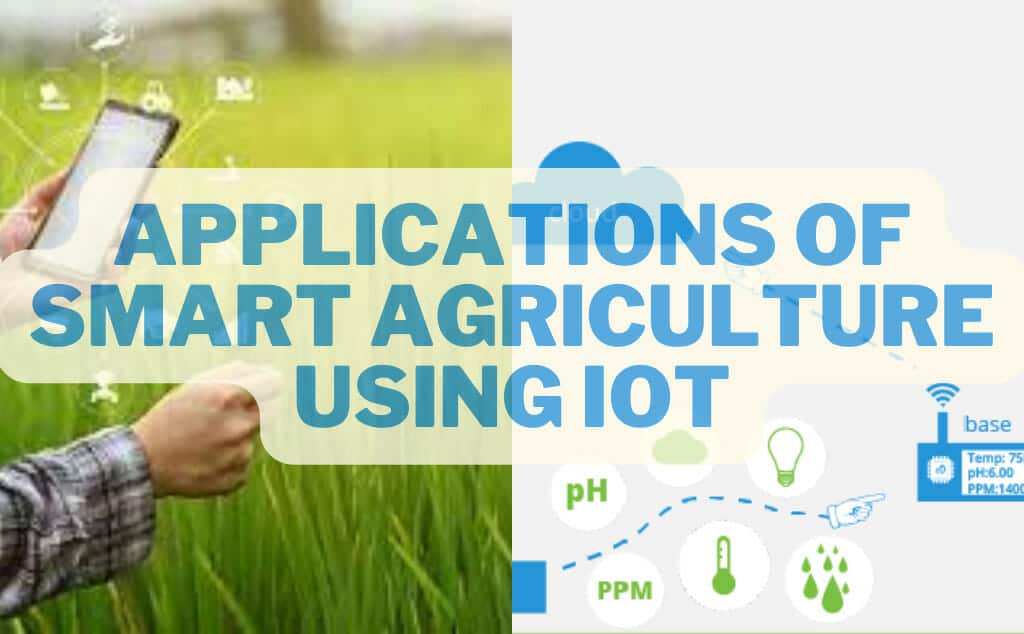1. Introduction to Smart Agriculture and IoT
The ever-growing population and the consequent demand for food has put immense pressure on the existing agricultural practices. To meet the ever-increasing food demand, it is necessary to increase the efficiency of agricultural processes and optimize the use of resources. The traditional approach to agriculture is no longer sufficient to achieve these goals. This is where smart agriculture and IoT come into the picture.
Smart agriculture is an approach to agriculture that uses modern technology to increase the efficiency of agricultural processes and optimize the use of resources. It includes the use of sensors, drones, and other smart devices to collect data about the crops, soil, and weather conditions. This data is then analysed to make informed decisions about irrigation, fertilization, and other agricultural practices.
IoT is playing a major role in the development of smart agriculture. IoT sensors can be used to collect data about the crops, soil, and weather conditions. This data can be used to make informed decisions about irrigation, fertilization, and other agricultural practices. IoT can also be used to monitor the agricultural machinery and equipment. This helps in reducing the downtime and increasing the efficiency of agricultural operations.
The use of smart agriculture and IoT is resulting in increased yield, reduced wastage, and lower production costs. It is also helping in the conservation of resources and the protection of the environment.
2. The Benefits of Smart Agriculture

The internet of things (IoT) is an emerging technology that is rapidly changing the way we live and work. IoT devices are connected to the internet and are able to communicate with each other, exchange data, and be controlled remotely. One of the most promising applications of IoT is in the area of agriculture. Smart agriculture, also known as precision agriculture, is an approach to farming that uses IoT technology to increase yields and improve efficiency.
There are many benefits of smart agriculture. One of the most important is that it can help farmers to be more precise in their farming practices. By using sensors and other devices, farmers can collect data about soil conditions, weather, and crop health. This data can then be used to make decisions about when to plant, how to irrigate, and what type of fertilizer to use. This precision approach can lead to increased yields and reduced costs.
Another benefit of smart agriculture is that it can help farmers to reduce their impact on the environment. By using IoT devices, farmers can monitor their water usage, soil health, and crop health. This data can help farmers to make more sustainable decisions about their farming practices. For example, they may choose to use less water or reduce the amount of chemicals they use.
Smart agriculture can also help to improve food safety. By using sensors, farmers can monitor the temperature of their crops and soil. This data can be used to prevent foodborne illnesses and to ensure that crops are properly cooked.
Overall, smart agriculture is a promising technology that can help farmers to increase yields, reduce costs, and improve food safety.
3. The Applications of Smart Agriculture
The applications of smart agriculture are many and varied. In this blog post, we’ll take a look at three of the most popular applications of smart agriculture using IoT technology.
Application #1: Livestock Monitoring
One of the most popular applications of smart agriculture is livestock monitoring. IoT devices can be used to track the location, health, and behavior of livestock. This information can be used to improve the efficiency of livestock production and to prevent animal diseases from spreading.
Application #2: Crop Monitoring
Another popular application of smart agriculture is crop monitoring. IoT devices can be used to track the growth, yield, and quality of crops. This information can be used to improve the efficiency of crop production and to prevent crop diseases from spreading.
Application #3: Water Management
A third popular application of smart agriculture is water management. IoT devices can be used to track the water use of crops and to optimize irrigation schedules. This information can be used to conserve water and to reduce the risk of crop diseases.
4. The Future of Smart Agriculture

The future of smart agriculture is very exciting. With the help of IoT, farmers can now have a better understanding of their crops and soil. They can also track the weather conditions and forecast the yield. This information can help farmers make informed decisions about when to plant, how to irrigate, and what type of fertilizer to use.
In the future, IoT will also help farmers to reduce the use of pesticides and herbicides. By collecting data about the health of the crop, farmers can target the application of these chemicals. This will help to reduce the impact on the environment and the health of the people who consume the food.
IoT will also help farmers to save water. By monitoring the irrigation system, farmers can optimize the amount of water that is used. This will help to conserve this important resource.
The future of smart agriculture is very exciting. With the help of IoT, farmers can have a better understanding of their crops and soil and make informed decisions about when to plant, how to irrigate, and what type of fertilizer to use. IoT will also help farmers to reduce the use of pesticides and herbicides, save water, and have a positive impact on the environment and the health of the people who consume the food.
